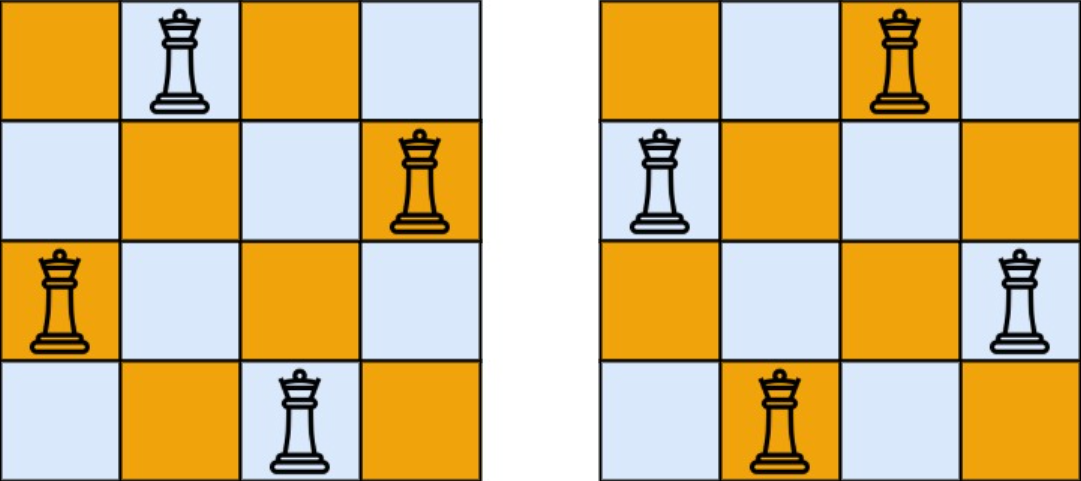2/12/24About 1 min
I Problem
The n-queens puzzle is the problem of placing nqueens on an n x n chessboard such that no two queens attack each other.
Given an integer n, return the number of distinct solutions to the n-queens puzzle.
Example 1
Input: n = 4
Output: 2
Explanation: There exist two distinct solutions to the 4-queens puzzle as shown.
Example 2
Input: n = 1
Output: 1
Constraints
1 <= n <= 9
Related Topics
- Backtracking
II Solution
Approach 1: Backtracking
Rust
pub fn total_n_queens(n: i32) -> i32 {
const DFS: fn(i32, i32, &mut Vec<(i32, i32)>, &mut i32) =
|row, len, pos, total| {
if row == len {
*total += 1;
return;
}
for col in 0..len {
if pos.iter().any(|&(r, c)| {
// same column
if c == col {
return true;
}
let slope = (row - r) as f64 / (col - c) as f64;
// same diagonal
slope == 1.0 || slope == -1.0
}) {
continue;
}
pos.push((row, col));
DFS(row + 1, len, pos, total);
pos.pop();
}
};
let mut res = 0;
DFS(0, n, &mut vec![], &mut res);
res
}Java
@FunctionalInterface
interface QuadrConsumer<A, B, C, D> {
void accept(A a, B b, C c, D d);
}
QuadrConsumer<Integer, Integer, List<int[]>, int[]> dfs =
(row, len, pos, total) -> {
if (Objects.equals(row, len)) {
total[0] += 1;
return;
}
for (int col = 0; col < len; col++) {
int finalCol = col;
if (pos.stream().anyMatch(p -> {
// same column
if (p[1] == finalCol) {
return true;
}
double slope = (double) (row - p[0]) / (finalCol - p[1]);
// same diagonal
return slope == 1 || slope == -1;
})) {
continue;
}
pos.addLast(new int[]{row, col});
this.dfs.accept(row + 1, len, pos, total);
pos.removeLast();
}
};
public int totalNQueens(int n) {
int[] res = new int[1];
this.dfs.accept(0, n, new ArrayList<>(), res);
return res[0];
}